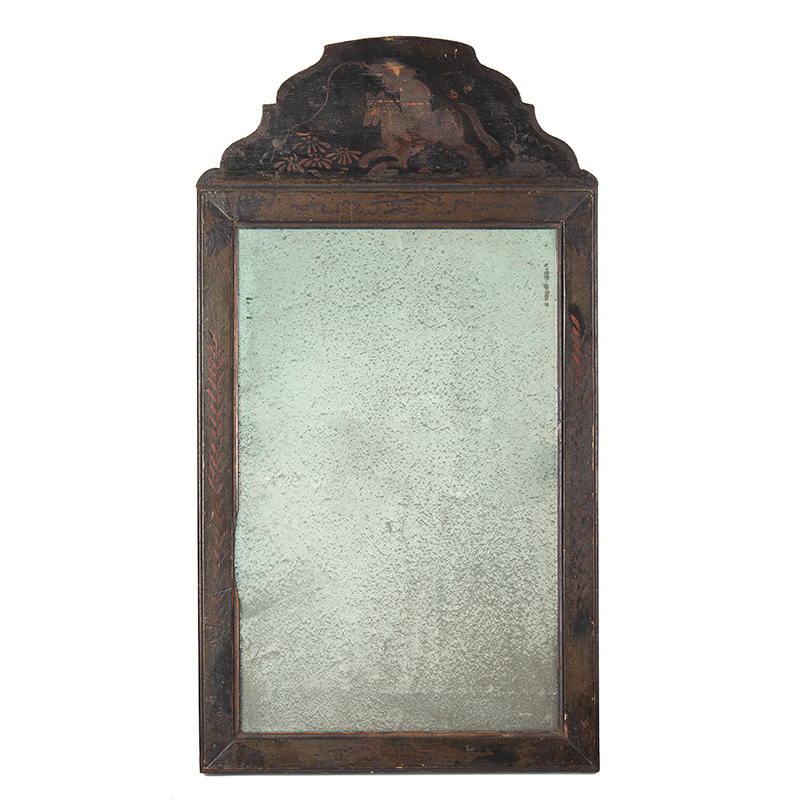


Exceedingly Rare

This japanned mirror-frame represents a rare survival of an early example of the form. Designed as two tiers of ogee curves, the cresting reflects a mode of design consistent with the early Baroque period: 1710-1730. The horse and rider motif are rarely encountered in any surviving japanned work. Perhaps a mounted warrior, this representation’s Asian overtones align it with the early period of Boston japanning. Constructed of wide grained white pine free of knots and insect damage, the frame is clearly of New England manufacture.
In addition to case furniture, Boston woodworking-craftsmen and japanners collaborated on smaller items. A range of crested mirrors frames were produced as a local alternative to the numerous English examples sold in New England. The domestic mirrors appear to have been made in relatively limited quantities as they likely could not compete with the low cost and availability of English imports. It was not until after 1750 that the increased availability of labor and the local manufacture of mirror glass supported by the overall expansion of the New England economy facilitated the large- scale production of looking glasses. The majority of New England mirror frames date from this period. Configured with applied ears and fretwork cresting, the later examples reflect the mid-18th century Baroque aesthetic.
New England japanned looking-glass frames were constructed of clear-grained white- pine, rather than the typically knotty spruce and deal seen in their English equivalents. The molded frames and applied crest patterns that New England craftsmen employed were often stylistically simpler when compared to the format of English mirrors. Typically, the completed frames were coated with a thick black pigment. This base layer was then adorned with gilt–work motifs built up on a gesso ground and accented with red and green. Although the process was different, the overall visual affect created by this technique was conceived to replicate oriental lacquer. In keeping with the Asiatic aesthetic, motifs derived from English interpretations of oriental iconography were often employed, including scholar’s rocks, warriors, and dragons. Later examples returned to western themes, shells foliage, and other naturalistic forms.
Item Date: Circa 1730
Measurement: 26.5" x 14.75"
Material: Northeastern white pine
Item Condition: Given the inherently fragile nature of all the elements of a japanned looking glass (frame, paint, and glass), this example has survived in remarkable condition. The japanned decoration has sustained only the most minor losses and retains an original coat of varnish. The crest has never been removed nor reinforced. Even more surprising, the mercury glass plate is intact and in place. Covering this element, the original backboard has not been disturbed and is affixed with 18th-century tapered iron shims. No re-nailing has taken place. Finally, the original slotted wooden hanger remains attached to the upper horizontal section of the frame. As the frame is not veneered as most 18th-century examples, the thin cresting has remained vertical
SOLD
SKU 1359-15
For More Information, Please Contact David Hillier at 978-597-8084 or email drh@aaawt.com.
Please click on images to expand.